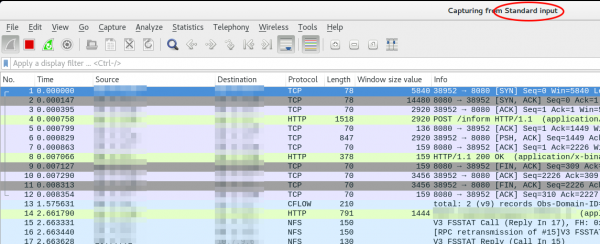
- WIRESHARK LINUX VS WINDOWS REDDIT INSTALL
- WIRESHARK LINUX VS WINDOWS REDDIT DRIVER
- WIRESHARK LINUX VS WINDOWS REDDIT CODE
In a network, promiscuous mode allows a network device to intercept and read each network packet that arrives in its entirety. What is promiscuous mode of operation in wireshark? Uncheck “Enable promiscuous mode on all interfaces”. Check “enp0s3” interface and uncheck all other interfaces, then press ‘OK’.ģ. Now follow next two instructions below:Ģ. The IP address of loopback “lo” interface is: 127.0.0.1 as visible in above image. Identify the IP address of “lo” interface: It will disaplay how many interfaces your system have? For example, this System has Nine Interfaces: Wireshark settings before packet capture:

Ignore it as now and press ‘OK’ to continue. Wireshark may display an error as you have opened it as superuser. The Wireshark application will be visible as below: Type the following command to open Wireshark:
WIRESHARK LINUX VS WINDOWS REDDIT INSTALL
Wireshark installation will continue and successfully install it on your system. Or, you may create a new group of users for accessing Wireshark. For security pupose, it is not advisable to allow non super users to access Wireshark. During installation, Wireshark configuration screen will ask “Should non super users be able to capture the packets?”. Press ‘y’ when prompted to occupy additional space. Open a terminal and type the following command to install Wireshark: Follow the information in this article below to use Wireshark on a Linux system (Ubuntu used for writing this article).

This article is a tutorial, in other words, a step by step practical guide to install and use Wireshark. It is the de facto standard across many commercial and non-profit enterprises, government agencies, and educational institutions. It lets you see what’s happening on your network at a microscopic level. And that compared to libpcap on the systems you mentioned.Wireshark is the world’s foremost and widely-used network protocol analyzer. Would be interesting to see the difference of pcap_dump() in dumpcap and pcap_live_dump() in kdump.
WIRESHARK LINUX VS WINDOWS REDDIT CODE
However, there is sample code for a tool called kdump (at the end of the page). The function pcap_live_dump() is not used in dumpcap, so there is no way to use/test that right now.
WIRESHARK LINUX VS WINDOWS REDDIT DRIVER
I tend to agree with that, although I don't know the internals of WinPcap or libpcap good enough for my own (internal) final résumé.Ĭite: 'When the kernel-level traffic logging feature of NPF is enabled, the capture driver addresses the file system directly, hence the path covered by the packets is the one of the red dotted arrow: only two buffers and a single copy are necessary, the number of system call is drastically reduced, therefore the performance is considerably better.' There's no generic reason why WinPcap would be faster than libpcap on all platforms Manually choosing an "appropriate" snapshot length would work better, but that's link-layer header type dependent, and some such headers (e.g., radiotap headers) are variable-length, so it's tricky. So -s0 may mean "fewer slots", but it may also mean "you get all the bytes of the packet". If there's segmentation offloading (so that a "packet" delivered to the adapter could be bigger than the maximum Ethernet packet size), or if the adapter isn't an Ethernet adapter, libpcap will fall back on the snapshot length as the maximum packet size, otherwise it'll use the MTU + 14 bytes for the Ethernet header. the smallest needed to ensure that no packets are cut short. With newer versions of libpcap, even with -s0 (65K snapshot length) will attempt to pick a "better" maximum packet size, i.e. When capturing with the TPACKET_V1 and TPACKET_V2 memory-mapped capture mechanisms (which are the only memory-mapped capture mechanisms supported by current libpcap - TPACKET_V3 isn't currently supported - and which are used by libpcap if available), the larger the maximum packet size libpcap uses, the fewer packet slots there are.

So, capturing with -s0 (65k) is a bad idea, as there are fewer slots for packets in the kernel buffer?


 0 kommentar(er)
0 kommentar(er)
